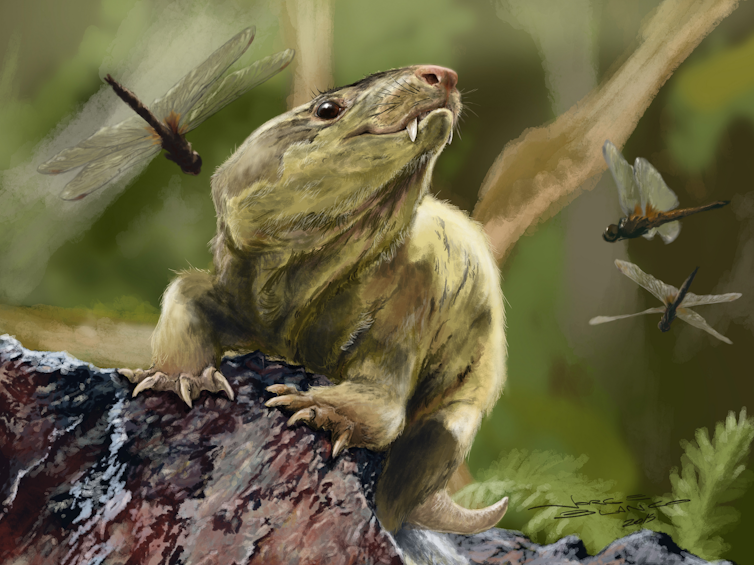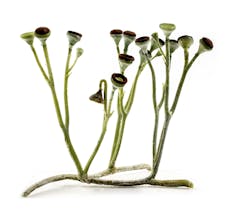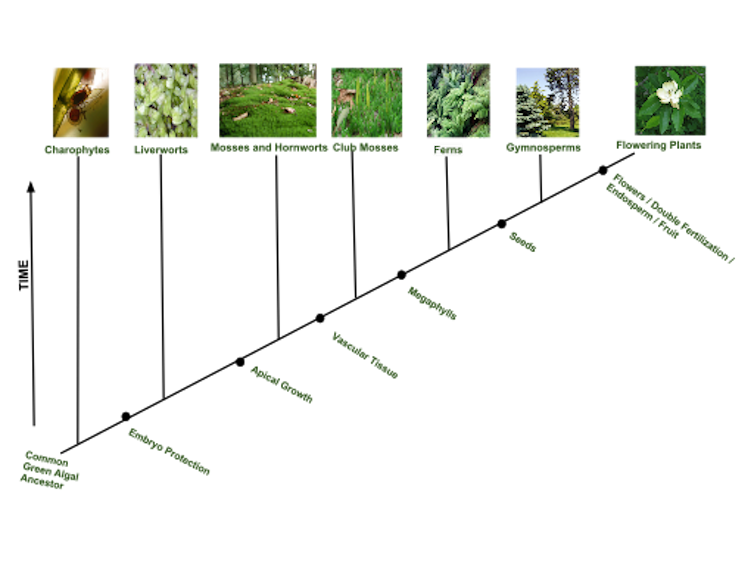

Crowded Conditions Muddle Frogs’ Mating Choices
Female treefrogs prefer a mate with an impressive call, but the crowded environments give unattractive males an edge, according to a new international study led by Assistant Professor Jessie Tanner of the University of Tennessee, Knoxville.
EEB Faculty Honored at the Annual College of Arts and Sciences Convocation
The College of Arts and Sciences hosted its annual awards ceremony on Monday, March 31, 2025, at the UT Conference Center in downtown Knoxville. The annual ceremony honors faculty members in all areas of the college’s mission, selected by their colleagues as representatives of the high standards of the college’s faculty as a whole. Awards were given for excellence in teaching, advising, and mentoring; academic outreach; research and creative activity; and more.
Schilling Lab Group Paper Receives Richard and Minnie Windler Award
The Richard and Minnie Windler award recognizes the best papers in ecology and systematics published in the journal Castanea in 2024. The paper acknowledges support from the Hesler Fund, as well as extensive use of UT Herbarium resources. Two of the co-authors (Jordan Reed and Cory Hale) participated in the project when they were EEB undergraduates. One outcome of the research was to help TDEC with conservation stewardship of the White Fringeless Orchid (Platanthera integrilabia), a Federally-Listed endangered species.
Happy Birthday, Darwin!
Biologist Charles Darwin would be 216 years-old this month, and museum educators and UT scientists at the McClung Museum of Natural History and Culture are celebrating with Darwin Day on February 23.
Ferns’ ability to evolve ‘backward’ offers insights into the meandering path of evolution
Ferns’ ability to evolve ‘backward’ offers insights into the meandering path of evolution

Imagine a photograph of your great-grandparents, grandparents and parents side by side. You’d see a resemblance, but each generation would look distinct from its predecessors. This is the process of evolution in its simplest form: descent with modification.
Over many generations, a staggering amount of modification is possible. This is how the diversity of life on Earth came to be.
This idea, though, has long been misunderstood as a path that leads in one direction toward “higher” or “better” organisms. For example, Rudolph Zallinger’s famous 1965 Time-Life illustration “The Road to Homo Sapiens” shows humans evolving in a stepwise fashion from ape-like ancestors to modern man.
Extending this perspective beyond humans, early paleontological theories about ancient life supported the idea of orthogenesis, or “progressive evolution,” in which each generation of a lineage advanced toward more sophisticated or optimized forms.
But evolution has no finish line. There is no end goal, no final state. Organisms evolve by natural selection acting at a specific geologic moment, or simply by drift without strong selection in any direction.
In a recently published study that I carried out with Makaleh Smith, then an undergraduate research intern at Harvard University who was funded by the National Science Foundation, we sought to study whether a one-way model of reproductive evolution always held true in plants. To the contrary, we found that in many types of ferns – one of the oldest groups of plants on Earth – evolution of reproductive strategies has been a two-way street, with plants at times evolving “backward” to less specialized forms.
The path of evolution is not linear
Selection pressures can change in a heartbeat and steer evolution in unexpected directions.
Take dinosaurs and mammals, for instance. For over 150 million years, dinosaurs exerted a strong selection pressure on Jurassic mammals, which had to remain small and live underground to avoid being hunted to extinction.
Then, about 66 million years ago, the Chicxulub asteroid wiped out most nonavian dinosaurs. Suddenly, small mammals were relieved of their strong predatory selection pressure and could live above ground, eventually evolving into larger forms, including humans.

In 1893, Belgian paleontologist Louis Dollo introduced the idea that once an organism progresses to a certain point, it does not revert to a previous state in the exact way in which it evolved – even if it encounters conditions identical to those it once experienced. Dollo’s law, as it came to be known, implies that specialization is largely a one-way street, with organisms accumulating layers of complexity that make backward evolution impossible.
While Dollo’s law has been criticized, and its original idea has largely faded from popular discourse, this perspective still influences aspects of biology today.
Plants and the march of progress
Museums often depict animal evolution as a straight-line progression toward higher stages, but they’re not the only sources of this narrative. It also appears in teaching about the evolution of reproduction in plants.

The earliest vascular plants – those with tissues that can move water and minerals throughout the plant – had leafless, stemlike structures called telomes, with capsules at their tips called sporangia that produced spores. The telomes did both of the plants’ big jobs: converting sunlight to energy through photosynthesis and releasing spores to produce new plants.
Fossil records show that over time, plants developed more specialized structures that divided these reproductive and photosynthetic functions. Moving through plant lineages, from spore-bearing lycophytes to ferns to flowering plants, reproduction becomes more and more specialized. Indeed, the flower is often diagrammed as the end goal of botanical evolution.

Across the plant kingdom, once species evolved reproductive structures such as seeds, cones and flowers, they did not revert to simpler, undifferentiated forms. This pattern supports a progressive increase in reproductive complexity. But ferns are an important exception.
Evolving, but not always forward
Ferns have multiple reproductive strategies. Most species combine spore development and photosynthesis on a single leaf type – a strategy called monomorphism. Others separate these functions to have one leaf type for photosynthesis and another for reproduction – a strategy called dimorphism.
If the patterns of specialization seen broadly across plants were universal, we would expect that once a lineage of ferns evolved dimorphism, it could not shift course and revert to monomorphism. However, using natural history collections and algorithms for estimating evolution in ferns, Smith and I found exceptions to this pattern.
Within a family known as chain ferns (Blechnaceae), we found multiple cases in which plants had evolved highly specialized dimorphism, but then reverted to the more general form of monomorphism.
Lacking seeds gives ferns flexibility
Why might ferns have such flexible reproductive strategies? The answer lies in what they lack: seeds, flowers and fruits. This distinguishes them from the more than 350,000 species of seed plants living on Earth today.
Imagine taking a fertile fern leaf, shrinking it down and wrapping it up tightly into a tiny pellet. That’s basically what an unfertilized seed is – a highly modified dimorphic fern leaf, in a capsule.
Seeds are just one highly specialized structure in a suite of reproductive traits, each building on the last, creating a form so specific that reversal becomes nearly impossible. But because living ferns don’t have seeds, they can modify where on their leaves they place their spore-producing structures.
Our findings suggest that not all reproductive specialization in plants is irreversible. Instead, it may depend on how many layers of specialization plants have acquired over time.
In today’s rapidly changing world, knowing which organisms or traits are “locked in” could be important for predicting how species respond to new environmental challenges and human-imposed habitat changes.
Organisms that have evolved down “one-way” paths may lack the flexibility to respond to new selection pressures in particular ways and have to figure out new strategies to change. In lineages such as ferns, species may retain their ability to “evolve backward,” even after specialization.
Ultimately, our study underscores a fundamental lesson in evolutionary biology: There is no “correct” direction in evolution, no march toward an end goal. Evolutionary pathways are more like tangled webs, with some branches diverging, others converging, and some even looping back on themselves.
Jacob S. Suissa, Assistant Professor of Plant Evolutionary Biology, University of Tennessee
This article is republished from The Conversation under a Creative Commons license. Read the original article.
UT Researchers Receive NSF CAREER Awards for Science, Engineering
Two researchers at the University of Tennessee, Knoxville, have received prestigious National Science Foundation CAREER awards to help them establish a firm foundation for a lifetime of leadership in integrating education and research.
Stephanie Kivlin, an associate professor in the Department of Ecology and Evolutionary Biology, and Wei Wang, an assistant professor in the Department of Mechanical, Aerospace, and Biomedical Engineering, join the NSF’s Faculty Early Career Development (CAREER) Program, which supports the nation’s best early-career faculty and recognizes their promise as academic role models in research and education.
- 1
- 2
- 3
- 4
- Next Page »